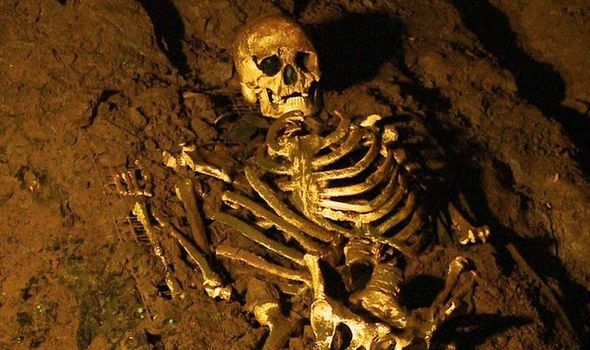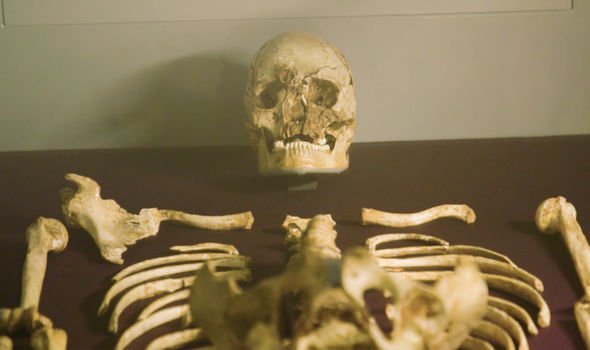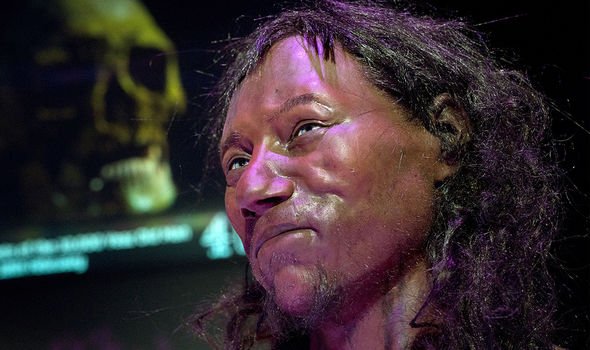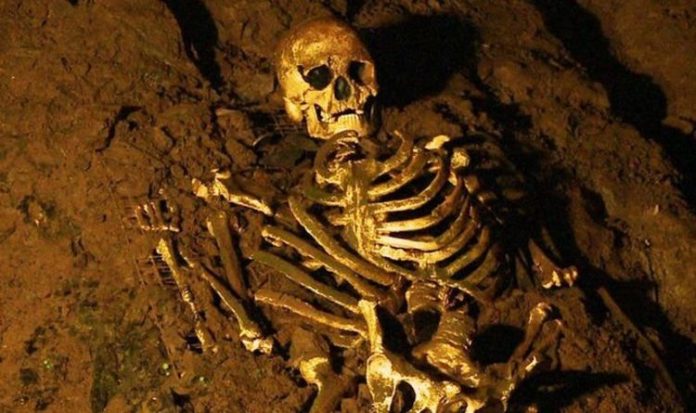Archaeology: Early human footprints in Norfolk discussed by expert
The skeletal remains of Cheddar Man – a Mesolithic hunter-gatherer found to have dark skin and blue eyes were first uncovered in 1903 at Gough’s Cave, in Cheddar Gorge, Somerset. When he was found, there were claims that our five-foot-tall ancestor was the long-sought earliest Englishman, dating back 40,000 to 80,000 years. But subsequent radiocarbon dating from the Seventies onwards suggests he lived around 10,000 years ago.
And now, travel writer Noo Saro-Wiwa has revealed how Britain’s prehistoric story has been unravelled since during History Hit’s ‘The First Britons’ documentary.
She said: “A cave, not far from where we are now, in Cheddar Gorge, Somerset, plays a key part in the story of the first Britons.
“In 1903, just two years after the death of Queen Victoria, a discovery was made that would change our understanding of who the early Britons were.
“But it would be over a century before we realised how significant that find would be.

A replica of the Cheddar Man has been placed back in the cave (Image: BBC)

Travel writer Noo Saro-Wiwa (Image: HISTORY HIT)
“Cheddar Man certainly wasn’t the oldest Englishman, or the oldest Briton, or even homo sapien to live in what’s now the British Isle.
“He wasn’t even the oldest inhabitant of Gough’s Cave – where he was discovered. Remains dating almost 5,000 years earlier revealed Ice Age humans who practised cannibalism.”
But Ms Saro-Wiwa explained why the find was “significant” by taking viewers back in time.
She said: “What is now Britain was forged between 620 million and one billion years ago – a great continental crust had come into being and was being split over time.
“The scattered jigsaw pieces that are now Britain were formed south of the equator – some parts even further away from Britain as Australia is today.
“Million of years passed until the various segments of Britain would drift across the equator and unite.
READ MORE: Egypt’s Great Pyramid mystery unravelled with ‘clear’ evidence of underground chamber

The Cheddar Man skeleton (Image: HISTORY HIT)
“Just under a million years ago, Britain – still connected to continental Europe, saw its first visit from our ancestors.”
Ms Saro-Wiwa detailed how early evidence of humans in Britain has been found.
She added: “In May 2013, a storm exposed a layer of rock on a beach in Haisborough, Norfolk, that was normally covered by sand.
“Three months later, sand was covering the layer of rock once more, but in the brief time in between, a group of archaeologists found something that looked like a series of footprints.
“We now believe they are around 900,000 years old and belonged to early humans.
“It’s been suggested that they belonged to homo intercessors – known to have lived in Spain.
DON’T MISS:
Antarctica: Scientists make breakthrough over dinosaur-extinction [VIDEO]
NASA asteroid revelation: Space rock ‘threatens’ Earth – researcher [ANALYSIS]
Asteroid tsunami: Why scientist offered dire warning to US coast [COMMENT]

The discovery was first made in 1903 (Image: HISTORY HIT)
“But at this time, Britain was a cold, hostile landscape and whoever these early humans were did not stay”
And the author explained why settlers did not stay long.
She added: “Prehistoric Britain’s climate changed wildly and sometimes it was a hot as the Mediterranean – other times Ice Ages would sweep across Britain eight or nine times.
“For thousands of years no human stepped foot on the land, but as it warmed, they returned.
“This is where one of our most famous distant relatives entered the picture, the Neanderthals.
“They entered and left Britain many times over 350,000 years as temperatures fluctuated.”

The Cheddar Man had dark skin, according to scientists (Image: HISTORY HIT)
Cheddar Man is Britain’s oldest complete human skeleton and gives an insight into the first group of Britons to permanently settle after the last Ice Age.
The remains are kept by the Natural History Museum in London in the new Human Evolution gallery.
Analysis of his nuclear DNA indicates that he was a typical member of the western European population at the time, with lactose intolerance, dark brown or black hair, and dark to black skin.
Scientists revealed how these features are typical of the Western European population of the time, now known as West European Hunter-Gatherers.
They found the Stone Age Briton had dark hair – with a small probability that it was curlier than average – blue eyes and skin that was probably dark brown or black in tone.
Researchers theorise that pale skin probably arrived in Britain with a migration of people from the Middle East around 6,000 years ago.
This population had pale skin and brown eyes and absorbed populations like the ones Cheddar Man belonged to.







